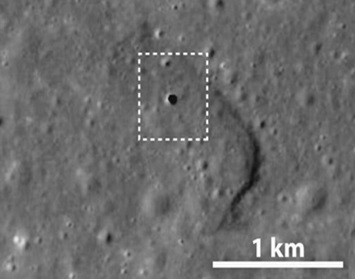Japan’s Lunar Orbiter Discovers 50Km Cave Beneath Surface
 Data from a lunar orbiter has confirmed a cave beneath the surface of the moon that could be used as an exploration base, providing shelter for astronauts and instruments, the Japan Aerospace Exploration Agency, or JAXA, said recently.
Data from a lunar orbiter has confirmed a cave beneath the surface of the moon that could be used as an exploration base, providing shelter for astronauts and instruments, the Japan Aerospace Exploration Agency, or JAXA, said recently.
The lunar orbiter Kaguya, also known as Selene, discovered the tube-shaped, 50km cave by using its radar sounder system that examines underground structures.
The cave was found at an area with a set of volcanic domes known as the Marius Hills.
The orbiter detected a hole about 50 meters in diameter and depth at the site in 2009, prompting experts to suspect that there could be a hollow space underground.
JAXA said the latest finding is remarkable, as the cave could help in exploration of the moon, shielding astronauts from extreme temperature and high radiation from space.
The underground chamber was possibly created by volcanic activities, the agency said.
Japan lags behind other countries in lunar exploration. China, for example, aims to bring back samples from the moon this year, and to send humans to the moon for exploration sometime after 2030. The U.S., meanwhile, plans to build a moon-orbiting space station as early as 2020.

